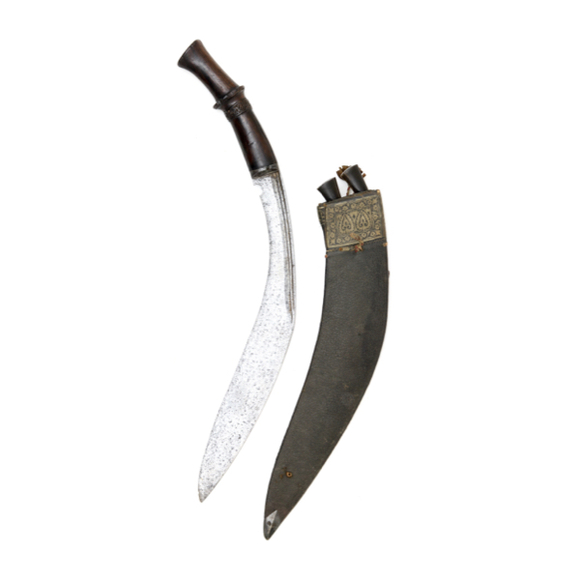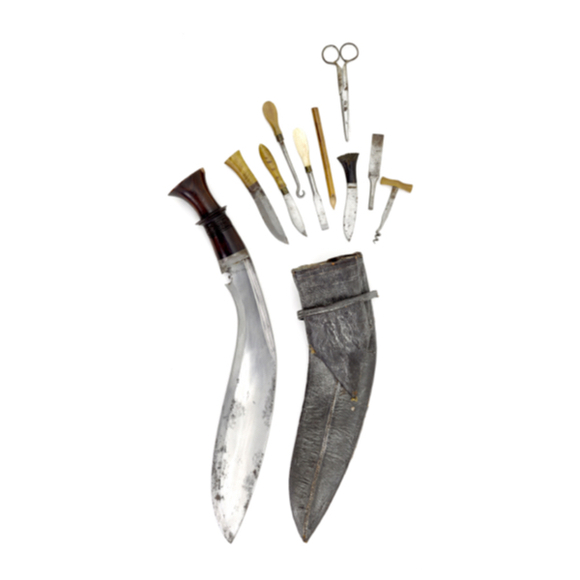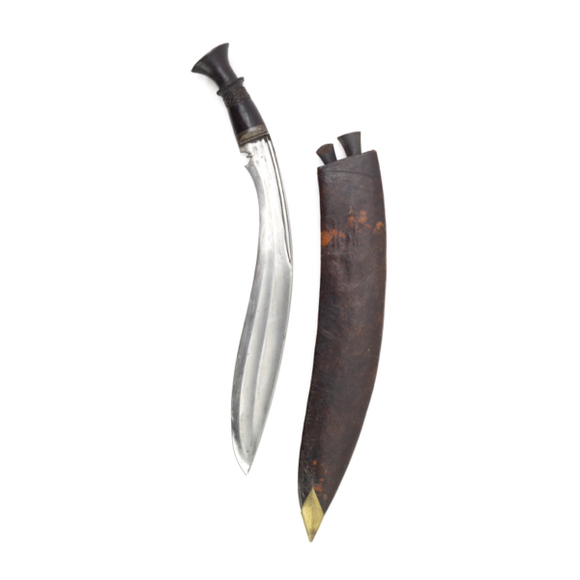Russet iron, one-piece construction with decorative grooves.

53.4 cm
25.4 cm
Base 20 mm
End of groove 12.5 mm
Widest 71 mm
End of groove 43 mm
1138 grams
Tamil Nadu, South India
Iron, forged steel, brass
16th or 17th century
A large and heavy South Indian spearhead with a broad, leaf-shaped blade.
Blade
The blade has deep, sunken panels divided by a pronounced ridge-line that continues up into the tip. One side is polished, revealing a bold forge folded construction. The other side was left "as found".
Decoration
At the base of the ridge is a stylized lotus to a type akin to similar motifs seen on Sinhalese decorative arts, with the addition of two dots.
Socket
The head appears to be tanged, the tang held in a long socket of elongated conical form. The socket is made of sheet iron, joined at the seem with copper alloy soldering. The seem is split at the top and bottom.
The socket has a number of bands engraved in them, with the addition of four disc-like ribs made of separate pieces of iron. The largest one at the bottom has a dome-shaped top with two washers, a large and a small, serving as the base. The very bottom of the socket is five-pointed.
Comparable examples
The Metropolitan Museum has a spearhead with a similarly pointed bottom which is attributed to 17th century Tanjore. See accession number 36.25.1930. It came from the famous London dealer W.O. Oldman who bought some of these pieces from Walhouse, after the disbanding of the Tanjore armory in the 19th century. Ex George Cameron Stone collection, bequeathed to the museum in 1936.
A piece nearly identical to the subject of this article is in the Government Museum of Chennai, accession number 2235. It has exactly the same blade, and very similar pointed socket with the difference that it has fewer ribs. 16th or 17th century. Chennai used to be known as Madras, and is the capital of Tamil Nadu. 1
Attribution
Most of these in collections are processional pieces that do not seem to have been primarily made for use.
This is probably a rare survival of a practical fighting spearhead of South India. As they are unusually large and heavy, I suspect these may have been designed to hold up against elephants, which were frequently used on the battlefield at the time.
Made in Tamil Nadu.
Notes
1. This piece is published in Elgood, Robert. Hindu Arms and Ritual: Arms and Armour from India 1400–1865. Delft: Eburon, 2004. page 194.








With a very fine Nepalese blade, but kard-like hilt and scabbard.
Early type with very shallow notch in the blade and little flare in the pommel.
20th century military khukurī with many different tools in its back pocket.






